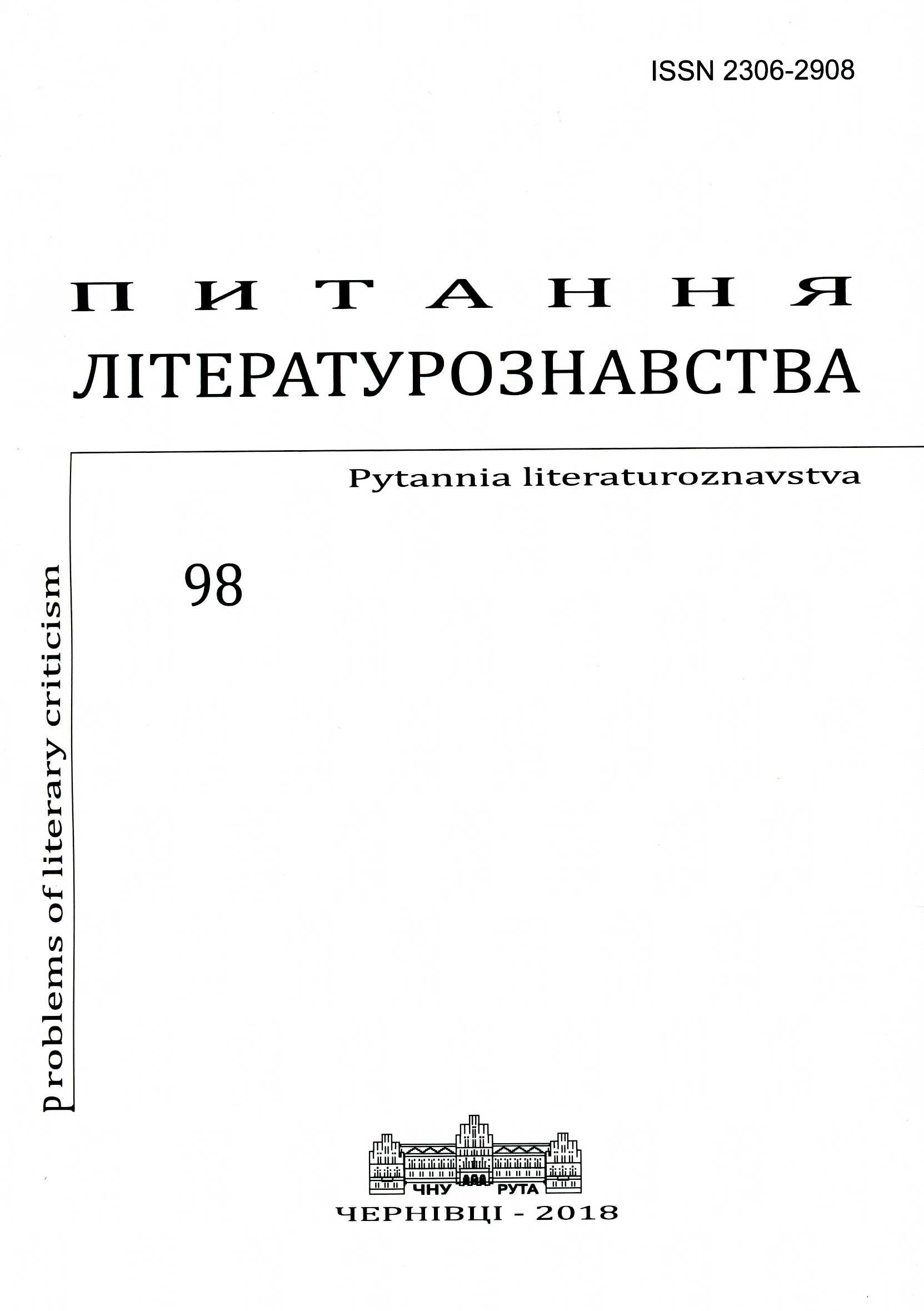The Fantastic Shakespeare: Character’s Passionary Confocality in the Aspect of Reception
The Fantastic Shakespeare: Character’s Passionary Confocality in the Aspect of Reception
Author(s): Alyona Tychinina, Dan ParanyukSubject(s): Language and Literature Studies, Studies of Literature, Comparative Study of Literature, Theory of Literature
Published by: Чернівецький національний університет імені Юрія Федьковича
Keywords: science fiction; fantasy; passionary character; confocal image; simulacrum; William Shakespeare; Clifford Simak;
Summary/Abstract: Based on J. Baudrillard’s methodology on the beginning of the era of hyperreality as the “world of simulation”, the article under discussion substantiates the expansion of science fiction horizons by means of “reversing the imaginary”. The latter notion is mostly marked with the inter-penetration of fictional worlds, which are genealogically revealed only in their connection with new genre forms. Particular emphasis in the “hyperreal indifference” of science fiction narratives has been laid on intertextual ties. The article updates the issue of intertextual potential of the personosphere of science fiction and fantasy, which, according to Tz. Todorov, presupposes “reader’s active integration into the world of characters”. In this way, the specifics of including the “fantasy” characters of Shakespeare’s plays into the intertextual space of science fiction has been analyzed. Much attention has been paid to the figure of William Shakespeare as a character in literary texts by American science fiction writer Clifford Simak (1904–1988) “The Goblin Reservation” (1968) and “Shakespeare’s Planet” (1976). Another emphasis has been laid on the peculiarities of synthesizing science fiction and fantasy that form the so-called “simulative hyperreality” by means of combining several models of personosphere – fairy, fantastic, fantasy, mystical, and other – in the creative activities of C. Simak. They function in accordance with the principle of combining the image fields, whose imagological vectors are constantly intersecting with each other. What is more, the personosphere has been attracted not by the protagonist, but by some confocal figure (a sage or a sentinel, according to C. Jung), who is absolutely neutral, however has a reliable “point of view”, thus winning reader’s receptive trust. In this case, W. Shakespeare is regarded as a confocal and, at the same time, passionary character, for he is presented as an imaginative nucleus of a personosphere, and not only as an intertextual phantasm (according to R. Barthes) or an atroponimic allusion. Therefore, this “penetration” of Shakespeare into science fiction may be considered as an essential intertextual ideologeme (according to J. Kristeva). Entering the world of other characters, his passionary status pushes away the center of the personosphere, thus generating the development of plot events. This is why the chronotope version, suggested by the American writer (whereby realistic, fantastic, fantasy and even mystical characters coexist quite peacefully), stands out as rather logical for Shakespeare’s timeless image, whose idiorhythmic nature is able to fit any context, ironically refuting the so-called “Shakespeare’s Question”. The article under studies also points out Shakespeare’s interrelations with a mystical anthropomorphic character Spirit, whose “traces” (in J. Derrida’s interpretation) frequently “run into” the figure of Shakespeare. Hence, it might be concluded that Shakespeare’s immanent presence strengthens the integrity of a literary text, as well as denounces the inferiority of its function in the personosphere, whereas in the aspect of reception, it intercepts the readers’ attention, shifting away the rest of the imaginative centers of the novel.
Journal: Питання літературознавства
- Issue Year: 2018
- Issue No: 98
- Page Range: 191-207
- Page Count: 17
- Language: English

